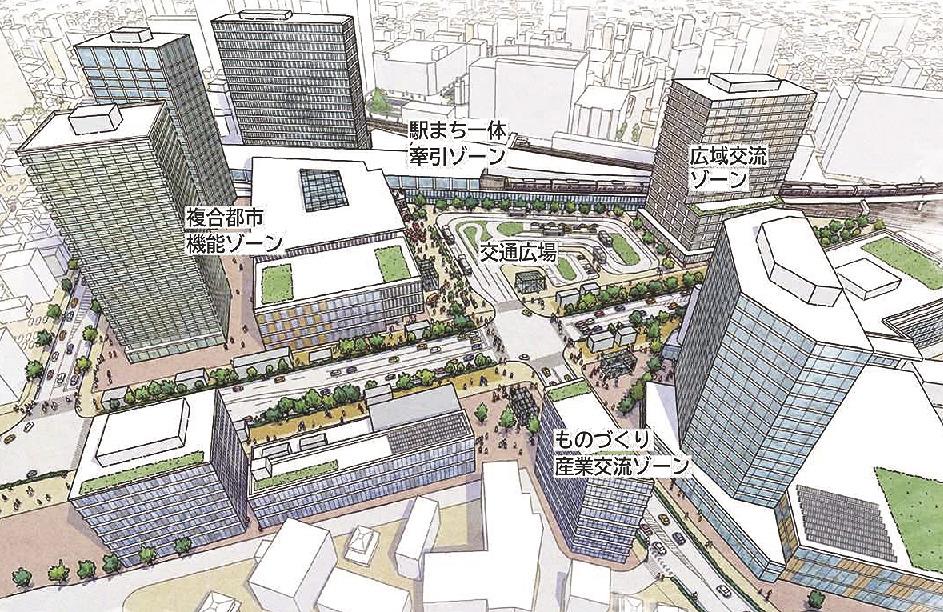Sagamihara City / Innovation Strategy for Development Around the Linear Shinkansen Station / Evolving into a Research & Development City
November 18, 2025 – Administration / Public Organizations

(Image: Development concept diagram – provided by Sagamihara City)
Sagamihara City announced its “Innovation Strategy for Urban Development Around the Linear Station” on the 14th. The construction of the Chūō Linear Shinkansen Station (provisional name) at the south exit of Hashimoto Station (Midori Ward, served by JR and Keio) is regarded as a major opportunity for the city to establish a regional-scale hub for industrial and product innovation, with reach toward both the Tokyo and Nagoya metropolitan areas. The city aims to attract companies, concentrate research functions, and ultimately develop into a Research & Development (R&D) City.
Going forward, the city will work with Kanagawa Prefecture to study the feasibility of developing an R&D center, conduct potential assessments, and consider policy measures to support the construction and location of private-sector office and business facilities.
The city hopes to leverage the strengths of central Kanagawa and the Tama region (Tokyo), both home to numerous corporate R&D centers, universities, research institutes, and highly skilled human resources. With the Linear Shinkansen providing enhanced connectivity between central Tokyo and the Kansai region, Sagamihara envisions becoming a “broad-based hub connecting people and businesses, linking Japan’s Chūbu region with the Tokyo Metropolitan Area.”
To realize this vision, the city has set six goals:
-
Establish a regional-scale innovation valley
-
Promote R&D in digital technologies, robotics, and mobility
-
Build global networks and international exchange spaces
-
Foster a culture and sense of pride in innovation
-
Develop platforms for testing and practical implementation around the station area
-
Attract and concentrate R&D organizations, high-tech companies, and university laboratories
In November 2023, Sagamihara City issued the “Urban Development Guidelines for the Linear Station Area,” outlining the long-term vision and overarching planning direction. The city will continue advancing innovation through a government–industry–academia collaboration model, ensuring alignment with higher-level plans such as the city’s Comprehensive Master Plan.
In December 2024, the city established the “Linear Line Urban Development Steering Committee,” chaired by Mayor Kentaro Motomura, to develop strategies for the area surrounding the new station and the planned Kanto Rolling Stock Yard (Midori Ward).
Under the steering committee are:
-
Promotion Coordination Council (headed by the Deputy Mayor, overseeing the Construction & Urban Development Bureau)
-
Promotion Liaison Council (chaired by the head of the Linear Station Area Development Office)
Additionally, the city created specialized subcommittees to study practical measures for industrial revitalization, promoting wide-area exchange, and developing a vibrant station-area environment.
This past September, the Urban Renaissance Agency (UR) received government approval for the “South Exit Hashimoto Station Land Redevelopment Project.” The project area covers approximately 13.7 hectares, including the site of the new Linear Station.
Total project cost is estimated at about 29 billion yen, with completion targeted for 2035.
Planned redevelopment measures include:
-
Creating a central transport plaza in front of the station
-
Designating the western district as a multifunctional urban zone hosting city-center functions, commercial facilities, offices, and daily services
-
Reorganizing the entire area south of Hashimoto Station, including the space directly above the new Linear Station






